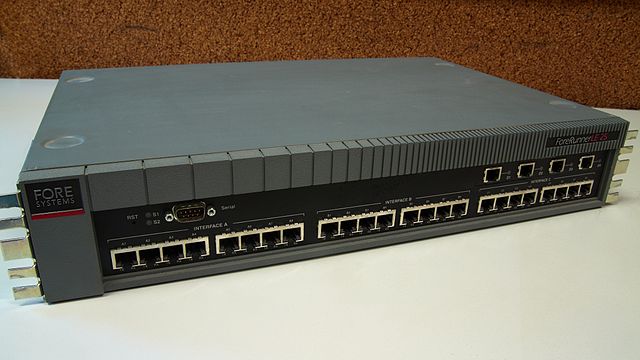Synchronous optical networking
Synchronous Optical Networking (SONET) and Synchronous Digital Hierarchy (SDH) are standardized protocols that transfer multiple digital bit streams synchronously over optical fiber using lasers or highly coherent light from light-emitting diodes (LEDs). At low transmission rates data can also be transferred via an electrical interface. The method was developed to replace the plesiochronous digital hierarchy (PDH) system for transporting large amounts of telephone calls and data traffic over the same fiber without the problems of synchronization.
Racks of Alcatel STM-16 SDH add-drop multiplexers
For the sake of simplicity, the frame is shown as a rectangular structure of 270 columns and nine rows. The first three rows and nine columns contain regenerator section overhead (RSOH) and the last five rows and nine columns contain multiplex section overhead (MSOH). The fourth row from the top contains pointers.
Asynchronous Transfer Mode
Asynchronous Transfer Mode (ATM) is a telecommunications standard defined by the American National Standards Institute and ITU-T for digital transmission of multiple types of traffic. ATM was developed to meet the needs of the Broadband Integrated Services Digital Network as defined in the late 1980s, and designed to integrate telecommunication networks. It can handle both traditional high-throughput data traffic and real-time, low-latency content such as telephony (voice) and video. ATM provides functionality that uses features of circuit switching and packet switching networks by using asynchronous time-division multiplexing. ATM was seen in the 1990s as a competitor to Ethernet and networks carrying IP traffic as, unlike Ethernet, it was faster and designed with quality-of-service in mind, but it fell out of favor once Ethernet reached speeds of 1 gigabits per second.
IBM Turboways ATM 155 PCI network interface card
ATM switch by FORE systems




